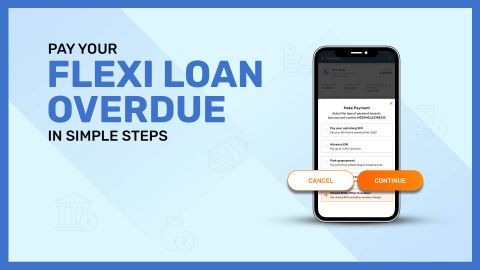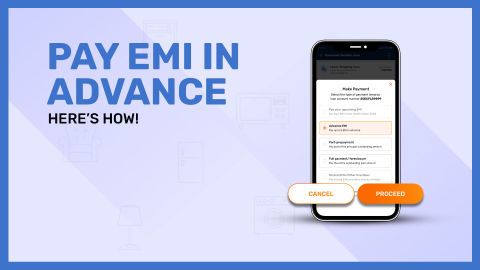Understanding bike loan disbursement delays
Bike loan disbursement is the final step in the loan process, where the approved amount is released to the dealer or the borrower. While most lenders promise quick disbursement—often within 24 to 48 hours of loan approval—there can be delays due to various reasons. Understanding these potential hiccups can help you prepare better and avoid unnecessary frustration.One of the most common causes of disbursement delays is incomplete or incorrect documentation. Any mismatch in your submitted identity proof, address proof, income statements, or bank details can result in verification issues. Lenders typically cross-verify these documents before disbursing the amount, and any discrepancies may put your application on hold until the errors are corrected.
Another factor is the loan approval backlog, especially during festive seasons or year-end sales when loan applications are at their peak. High demand can lead to slower processing times, which in turn delays disbursement. Additionally, if you are applying for a loan with a low credit score, your application may undergo more stringent checks and longer approval cycles, thereby impacting the disbursement timeline.
Technical issues such as system errors, bank holidays, or delays in dealer verification can also contribute. If the dealer you are purchasing from is not empanelled with the lending institution, the bank might take additional time to verify the legitimacy of the transaction before releasing funds.
Lastly, delays may occur due to last-minute changes in the loan terms or dealer invoice. Any modifications post-approval—like a change in the bike model, cost, or dealer—can require the bank to revalidate the application.
To minimize these delays, borrowers should ensure all documentation is accurate, keep communication open with both the lender and dealer, and opt for a lender with a streamlined digital process. Being proactive and responsive throughout the application journey helps ensure that your bike loan disbursement proceeds without unnecessary setbacks.
Reasons why your bike loan amount may not be credited
When you apply for a bike loan, one of the most anticipated steps is the disbursement of the loan amount. However, in some cases, the amount may not be credited to your or the dealer’s account on time—or at all. Here are some key reasons why this may happen:- Incomplete documentation Missing or incomplete documents such as ID proof, address proof, income proof, or bank statements can lead to processing delays or even rejection of the disbursement.
- Incorrect bank or dealer details If the bank account number, IFSC code, or dealer details provided are incorrect, the disbursal process can be interrupted, leading to delays or failed transactions.
- Verification issues Lenders conduct background and document verification. If there's a mismatch or if verification fails due to unverifiable information, disbursement may be put on hold.
- Loan approval still pending The disbursement can only happen after full loan approval. If your application is still under review or awaiting final approval, the loan amount will not be credited.
- Technical glitches System errors, server downtime, or technical faults during the bank’s internal processes can cause temporary hold-ups in the disbursement.
- Non-empanelled dealer If you're purchasing from a dealer who isn't registered or partnered with the lending institution, the bank may delay or reject the disbursement until further verification is completed.
- Credit score concerns If your credit score is below the lender’s threshold, they may re-evaluate the application even after initial approval, causing delays or denial of disbursal.
- Mismatch in bike invoice details Any difference between the bike model, price, or variant mentioned in your loan application and the actual dealer invoice may lead to a hold in the disbursement.
- Loan terms modified after approval Any changes in interest rates, tenure, or down payment post-approval can trigger a re-verification process, delaying the release of funds.
- Bank holidays or non-business days If the disbursement date falls on a weekend or bank holiday, the amount may be credited on the next working day.
- Pending signature or consent Sometimes, digital or physical signatures may be pending on critical documents like the loan agreement or ECS mandate, causing delays in fund release.
- Delayed insurance or RTO clearance Some lenders require insurance and RTO procedures to be initiated before disbursement. Delay in these processes may also stall the crediting of the amount.
Steps to take when your bike loan is disbursed but not credited
If your bike loan has been marked as “disbursed” by the lender but the amount hasn’t been credited to your or the dealer’s account, it's essential to act promptly. Here are the key steps to take:- 1. Verify the disbursement status
- Check your loan application status through the lender’s website, mobile app, or customer service helpline.
- Confirm that the status actually reflects "Disbursed" and note the transaction date and reference ID.
- 2. Confirm with the dealer or bank account
- If the loan is supposed to be credited to the dealer, contact them to verify if the amount has been received.
- If it’s to be credited to your bank account, check with your bank for any pending transaction or delays in credit.
- 3. Cross-check bank details
- Ensure that the correct account number and IFSC code were submitted during the loan process.
- Even a minor error in account details can result in transaction failures or funds being held in limbo.
- 4. Contact the loan officer or relationship manager
- Reach out to the designated executive handling your loan.
- Share the issue along with relevant details like application number, date of disbursement, and supporting screenshots if available.
- 5. Raise a complaint through official channels
- File a formal complaint through the bank or NBFC’s customer care portal, email, or branch visit.
- Always note the complaint ID for future reference.
- 6. Request a transaction reference number
- Ask the lender for the transaction ID or UTR number of the disbursement.
- This helps your bank or the dealer’s account team trace the payment.
- 7. Visit your bank or dealer in person
- In case of urgency, visiting the bank or dealer physically may accelerate the resolution process.
- Carry all loan-related documents, ID proof, and the transaction reference for verification.
- 8. Wait for settlement time (if applicable)
- Sometimes, banks take 24–48 hours to reflect the amount due to internal processing or inter-bank settlements.
- Allow this window to pass before escalating further.
- 9. Escalate to higher authorities
- If the issue persists beyond 3–5 working days, escalate to the nodal officer, grievance redressal officer, or use the banking ombudsman route for resolution.
- 10. Maintain written records
- Keep all communication via email or obtain written acknowledgement for in-person interactions.
- This helps build a case if you need to escalate or seek legal assistance.
How to contact your lender about disbursement issues?
If you're facing issues with your bike loan disbursement, such as the amount not being credited to your or the dealer's account, it's essential to get in touch with your lender promptly. Here’s a step-by-step guide with pointers to help you resolve the issue effectively:- 1. Check the disbursement status first
- Log in to the lender’s official app or website.
- Look for the loan application or disbursement section.
- Confirm that the loan status shows “Disbursed.”
- 2. Collect all relevant information
- Note your loan account number, customer ID, and transaction reference ID.
- Keep a copy of your loan approval letter, KYC documents, and bank/dealer details ready.
- 3. Call customer care
- Use the official customer care number mentioned on the lender’s website or app.
- Explain your issue clearly and request for a disbursement update.
- Note down the complaint or service request number for follow-up.
- 4. Email the lender
- Write a detailed email outlining the disbursement problem, including your loan account details and supporting documents.
- Send the email to the official customer service or grievance email ID.
- Keep a copy of the email and any responses for your records.
- 5. Use mobile app chat support
- Many lenders offer chat support through their mobile apps or websites.
- Use this feature to get quick updates or lodge a complaint about the disbursement issue.
- 6. Visit the branch in person
- If the issue is urgent, visiting your nearest lender’s branch may lead to faster resolution.
- Carry all relevant documents and ID proof for verification.
- 7. Contact your relationship manager (if assigned)
- If your loan was processed through a relationship manager or sales executive, contact them directly.
- They can coordinate internally and help expedite the disbursement.
- 8. Raise a grievance
- If no response is received within 3–5 working days, escalate the issue by raising a formal grievance through the lender’s portal.
- Include your complaint ID and all communication history.
- 9. Use the RBI ombudsman (if unresolved)
- If the lender fails to resolve your issue within 30 days, file a complaint with the RBI Banking Ombudsman.
- Submit all documentation and complaint references for support.
- 10. Keep all communications documented
- Maintain written records of all your interactions—calls, emails, and in-branch visits—for future reference or escalation.
When to involve a financial ombudsman or legal help
While most bike loan disbursement issues can be resolved through direct communication with the lender, there are situations where involving a financial ombudsman or seeking legal help becomes necessary. Below are key instances when such escalation is appropriate:- 1. Lender fails to resolve complaint within 30 days
- If your formal complaint remains unresolved for more than 30 days despite multiple follow-ups, it’s time to escalate to the RBI-appointed Financial Ombudsman.
- 2. Repeated communication ignored
- When customer care fails to respond or provides automated replies without action, this indicates negligence that may warrant intervention by a regulatory authority.
- 3. Disbursement marked 'completed' but not credited
- If the disbursement status shows “completed” but the loan amount has not been received, and the lender cannot provide proof of the transaction, escalation is justified.
- 4. Incorrect deduction of EMIs or charges
- If you’re being charged EMIs without loan disbursement or find discrepancies in your EMI deductions, consider checking yourmy emi status and escalating the issue.
- 5. Misrepresentation of loan terms
- In case of misinformation regarding interest rates, tenure, or insurance add-ons not discussed during the loan agreement, legal advice can help you challenge unfair practices.
- 6. Forced loan closure or harassment by recovery agents
- If you're being pressured to repay a loan that hasn't been disbursed or are facing harassment, report it to the ombudsman or seek legal protection.
- 7. Data privacy violations
- If your personal or financial data is misused or shared without consent, it's advisable to escalate through legal channels.
- 8. Dispute in outstanding payments
- If your loan shows an inaccurate balance or default despite on-time payments, check youroutstanding payment details and initiate a formal grievance or legal process.
- 9. No Resolution through grievance redressal
- If the lender's grievance redressal team fails to take action, you can file a complaint with the RBI Ombudsman online at https://cms.rbi.org.in.
- 10. Fraudulent transactions or unauthorised loan applications
- In case of identity theft or fraudulent loan applications in your name, legal help should be sought immediately to protect your credit and financial records.




